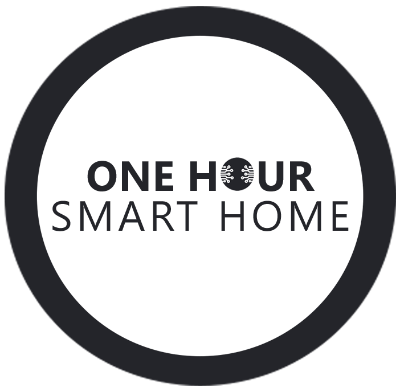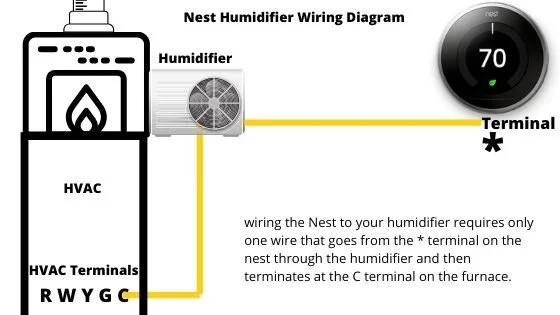Best Humidifier For Nest
/Best Humidifier For Nest
We cover the best humidifiers that work with Nest and how to connect a humidifier to your Nest Thermostat to function in your home.
There are a large number of humidifiers that work with Nest, but we’ve narrowed it down to the humidifiers that in our experience are easy to install, reliable, work with Nest, and provide the proper levels of controllable humidity throughout your home.
There are two main types of whole home humidifiers that work with Nest. Bypass Humidifiers and Fan Power Humidifiers. We explain the difference between each below so you can choose the right one for your home.
Related Post: How To Sleep Better With Nest Temperature Sensors
Bypass vs Fan Powered Humidifier
Bypass humidifiers are designed to work passively with the airflow within HVAC system to distribute water within the air and add humidity. A bypass humidifier works by installing a small bypass duct that funnels air through the humidifier across the moisture plates and then funnels the warm moist air back into your HVAC system air to add humidity throughout your home.
The advantages of a bypass humidifier are that it doesn’t require 120V power to operate and they are typically lower cost for the unit.
The disadvantages of a bypass humidifier are that they can only humidify the air when the furnace is running because they require the furnaces air to blow across the humidifier plates. Another disadvantage of bypass humidifiers is that they require additional ductwork which can add costs to an installation if you don’t already have the existing ductwork for a bypass humidifier.
Fan Powered Humidifier
Fan powered humidifiers are my preferred type of humidifier for Nest and the majority of HVAC systems. Why? Because Fan Powered humidifiers are easy to install, offer simple operation and have a long track record of reliability. The biggest advantage of a fan powered humidifier is that it uses a fan to push air across the moisture plates so it can constantly humidify the air in your home even if you don’t have the HVAC on because the fan power is independent of the HVAC system. This means that Fan Powered humidifiers can provide adequate humidity even for large homes in the driest climates.
While the cost of fan powered humidifier might be slightly more than a bypass humidifier, the installation of a fan powered humidifier is much easier than a bypass humidifier. Installing a fan powered humidifier requires no additional ductwork, and it basically just involves cutting a hole on the side of your HVAC system and installing the humidifier. Fan powered humidifiers typically have a 120V corded plug that needs to be plugged in with a few feet of you HVAC system. Most HVAC systems have an outlet within a few feet of where the on off switch for the system is located. If not you could add an outlet at the location of the on off switch for your HVAC system.
If I were going to install new nest compatible humidifier for my home I would get a fan powered humidifier for the reasons listed above.
Best Humidifier For Nest (Fan Powered)
This reliable, fan powered humidifier, is my favorite humidifier that works with Nest. It’s easy to install, provides simple operation and provides easy access for maintenance, which is an important part of owning a humidifier. It has 24V wiring that hooks up to your Nest Thermostat and is powered via a simple cord and plug that will work with a standard 120v outlet which is typically found next to your HVAC system.
If I were building a new home or installing a new humidifier this is the one that I would pick. It can humidify 4000SF and with the fan power it can quickly provide needed humidity in your home.
The Aprilaire 700 Fan Powered humidifier works with nest and offers simple one wire installation if you plan on connecting the humidifier to the Nest thermostat.
Best Bypass Humidifier For Nest
If you already have an existing bypass humidifier that is broken or doesn’t work this is a great retrofit option. The Aprilaire 600 Bypass Humidifier offers reliable humidification, easy filter change and can be installed in 30 minutes if you have an existing bypass humidifier. The only wiring required for this humidifier is for the control valve as it does not have a powered fan and uses the flow of your HVAC system to humidify your home. If you already have the existing bypass piping installed it can sometimes be easier to reinstall a bypass humidifier than it is to install a new fan powered humidifier.
However if you don’t have a humidifier already or are building a new home I strongly recommend fan powered humidifiers over bypass humidifiers.
Nest Thermostat Humidifier Wiring
Wiring a Nest Thermostat to a humidifier takes only one wire. The Nest controls the humidifier by providing a 24V power signal through the * terminal which then creates a circuit from the Nest, through the humidifier and back to the C terminal on the HVAC system. We’ve included both the wiring diagram for a using Nest with a Humidifier and out youtube explaination of a Nest Thermostat Humidifier Wiring diagram below. We’ve also included our video instructions for how to wire a Nest Thermostat to a humidifier below.
The * terminal on the Nest is designated for use with humidifiers and dehumidifiers.
Nest Humidifier Wiring Diagram
Nest Humidifier Wiring Diagram
Installation Steps For A Humidifier That Works With Nest
If you don’t have an existing humidifier and are planning on installing one with the Nest Thermostat we’ve outlined the steps below for a fan powered humidifier.
Order the humidifier and nest. If you don’t have an extra wire to use for your humidifier wire you will need to run an extra wire or use your G wire as a humidifier wire, and wire it per the instructions and diagrams above. Your G wire is used for controlling your fan independently and is not needed unless you want to circulate air while your heating or cooling is off. The fan and blower motor will automatically turn on anytime your heating or cooling your home.
Use provided humidifier template in box or make your own to outline the opening you will cut in the metal to install your humidifier.
Use a drill bit to drill the 4 corners of the template and use progressively larger drill bits so you can use a saw, Dremel tool or grinder to cut away the metal. The easiest way to cut the opening is with a sawsall If you don’t have one available you can typically rent them at places like home depot. You could also drill lots of small holes around the template outline and then use snips to connect them and remove the cut out. This method takes patience time and a lot of effort, using a sawsall or renting one is typically much easier.
Cut the hole and opening.
Mount the humidifier to your HVAC system.
Connect the waterlines and drain-lines.
Wire the humidifier to the nest.
Plug in the humidifier, turn on your HVAC system test the humidifier operation with the Nest. You will most often need to adjust the humidifier settings on within the Nest equipment and settings menu.
Summary: Best Humidifiers That Work With Nest
Connecting and setting up a humidifier that works with Nest is a process that takes an hour or two and can be completed by the DIY’er with a few basic tools. If you already have humidifier and are just looking to replace it, the task is made even easier.
When possible I recommend using fan powered humidifiers with the Nest Thermostat because they offer the best balance of performance, ease of installation and reliability.
If you are looking to install a humidifier that works with the Nest Thermostat you can’t go wrong with either of the two tested and reliable Aprilaire smart home humidifiers we listed above. The Aprilaire 700 fan powered humidifier is our recommendation for new builds or retrofits when you don’t have an existing humidifier. If you already have a bypass humidifier we recommend the Aprilaire 600.
In colder or drier climates adding a humidifier to your home can increase comfort, and help prevent damage caused to your home by extremely dry air.
Our pick for Best Humidifier For Nest










